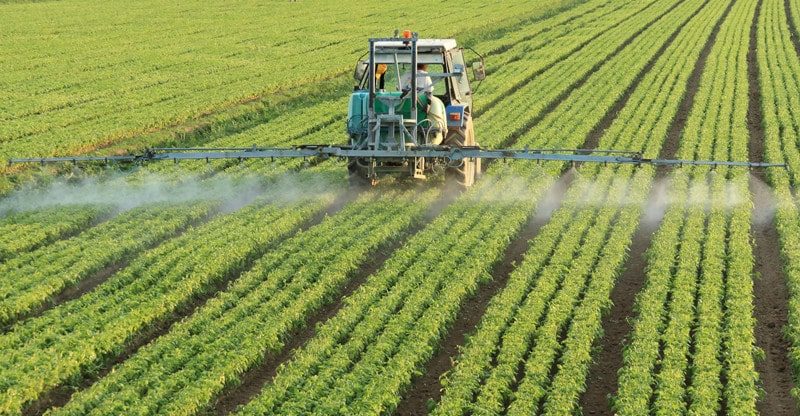Crop Farming Business Plan for High Yields and Profit
Few businessmen decide to create a farm, thinking that it is too costly and unprofitable. However, this opinion is far from the truth since modern farming is one of the most promising areas for entrepreneurship.
If years ago, managing a farm was a complex, time-consuming, and physically exhausting process, today, the market offers various digital tools for remote farm monitoring, which significantly cuts the effort necessary to start and maintain the new farm.
And even though crop farming is a kind of seasonal business, this does not apply, for example, to cucumbers, tomatoes, herbs, and strawberries. They can be grown all year round in greenhouses. Besides, this business is wildly profitable in winter, when the prices for fresh vegetables almost double.
Those interested in getting their crop farm underway know that it’s a complicated process that requires thorough planning and preparation, which starts with creating a business plan. Based on this plan, the future farmer will calculate the costs of starting a farm, the payback period, and profitability.
A business plan can also be viewed as a visiting card of the new business, which is necessary when receiving subsidies from the state, looking for investors, and other funding sources. This article will focus on the most critical steps that every crop farming business plan should cover.
Identifying Goals and Objectives
Before opening any business, it’s critical to draw out its goals and objectives. Start with answering the questions why you want a crop farm, what purpose it will serve, and where it will be headed.
All of these questions should not concern the money aspect and making as much profit as possible. The goals of your future farming business should be specific, measurable, and achievable. Divide them by the period in which you plan to reach them. For instance, define short-term goals as ones you will complete in one year and long-term goals – in longer than one year.
Acquiring Farmland
The choice of a plot of land for a farm depends on the scale of the business the entrepreneur plans to organize. Some farmers start a business on existing farmlands, gradually expanding their holdings. In general, large areas are not needed for a start, although it depends on the specific features of the crops you plan to cultivate.
There are two options for obtaining land: purchasing or renting. Buying a land plot, of course, requires certain costs. However, in some regions, significant areas are empty so that plots can be purchased at attractive prices. Land lease involves monthly or quarterly payments. They are not comparable to the purchase price, but it is necessary to correctly calculate the profit, especially at the initial stage, to reach the payment.
Organizing the Production Process
After receiving land, it is necessary to carry out some measures for the business to work in full. A novice crop farmer needs to purchase resources depending on the area of production:
• Plant seeds
• Equipment (tractors, harvesters, etc.)
• Related products (fertilizers, pesticides, etc.)
On top of that, you need to think about production facilities. If there are any buildings on the ground, then they probably require refurbishment or repair. If not, then you need to build structures.
These can be warehouses for storing products, greenhouses for plants, buildings for storing inventory. All this must be taken care of before the opening of the production. An equally important point is the search for personnel that will perform field activities.
Seeking Investments
The future farmer also needs to think about the financial side of a novice business. There are several options for obtaining start-up capital for a new farm: a loan from the state, a loan from private banks, or becoming a member of the agro cooperative. A bank loan can be taken out easily, but the interest can be much higher than if help was sought in government agencies.
If you have your savings, this dramatically simplifies the whole process. Investments can be another source of additional finance. The main thing is to prove your prospects and solvency to potential investors.
Developing Marketing Strategy
If a small farm is organized from scratch, you need to carefully study consumer needs and those areas where you can later sell the product. Since products generally deteriorate quickly, a vital role is assigned to finding a permanent consumer.
The agricultural market has a big drawback – high competition. You can sell products on it yourself but in small quantities. But for those who do not want to stop there, this option is not entirely suitable.
To arrange supplies to large retailers, such as restaurants, supermarkets, etc., it is imperative to have quality certificates for each product. Small farmers often give their products to resellers, which adversely affects their profits since the price, in this case, is much lower than that of the direct buyer. But only a farmer with extensive experience in this industry can find direct access to a large buyer.
Pro Tip: Which Crops to Choose for a Novice Farm
There are a lot of crops that are suitable for growing on an agricultural plot. When choosing them, it is essential to consider with what latitude you plan to grow, what weather conditions, treatment, and irrigation they require. If you have a small amount of land, the most suitable choices are potatoes, tomatoes, and cucumbers, which are also some of the most high-yielding crops.
The cultivation of grain crops is advisable if you have more than one hectare of land and own machinery. Wheat, barley, corn, sunflower, and buckwheat are very popular among farmers. Particular attention should be paid to the seeds that will be used for sowing.



